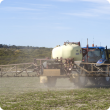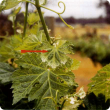Preventing residues
Agricultural enterprises in Western Australia use a wide range of chemicals to protect their yield potential and export opportunities from pests, weeds and diseases. Chemicals provide many benefits to primary production but must be used responsibly to minimise the adverse effects associated with their use.
Residues are traces of a chemical or its breakdown products that are in or on an agricultural product after a particular time. Consumers are increasingly concerned about the level of chemical residue in the agricultural produce they purchase. Residues are at an unacceptable levels when they detected above the legally permitted maximum residue limit.
The Department of Agriculture and Food, Western Australia provides information on managing chemical residues.



